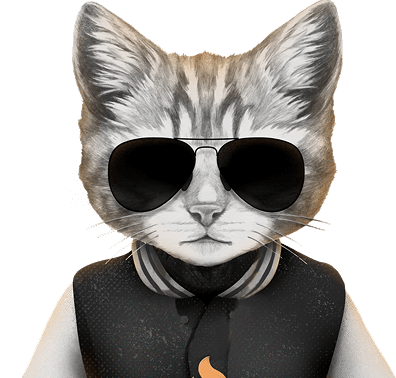
Virtual influencers have become increasingly popular in recent years, popping up all over social media both on their own accounts and as a part of bigger, more established brand accounts – but just what are they, and where did originate?
Defining the virtual influencer
Let’s start with a definition: virtual influencers are digital avatars or characters that are used to promote products or services on social media platforms, such as Instagram. Typically created using CGI or 3D modeling software, these characters are designed to resemble real people or animals, sometimes in anthropomorphic form. Unlike traditional influencers, who are of course actual people with their own personal brand, virtual influencers do not have a physical body or a real-life identity – they are entirely manufactured.
Often used to promote products or services related to fashion, beauty, and lifestyle, virtual influencers have the ability to reach a large and engaged audience via social media – but they’ve also been subject to criticism and debates surrounding authenticity and the ethics of their presence in the influencer marketing industry. To get you up to speed, we’ll be exploring the history, types, and impact of virtual influencers on Instagram, as well as the ethical considerations surrounding their use in modern-day marketing.
A quick historical recap of virtual influencers
The concept of fully-digital creators dates back to the early days of the internet when companies and brands used digital mascots as the face of their products or services online. However, the term "virtual influencer" did not become commonplace until the emergence of popular social media platforms such as Facebook and Twitter in the late 2000s and early 2010s.
Of all the influencers within the digital space, one of the most prominent would be Miquela Sousa, also known as Lil Miquela, who released in 2016 as a CGI character and subsequently amassed plenty of followers on Instagram for her beauty and clothing-focused posts. Since then, tons of virtual influencers have blown up on social media platforms, including Shudu, a virtual model created by photographer Cameron-James Wilson, and Noonoouri, a virtual influencer created by Belgian artist Dihn – and the number just keeps rising.
A retrospective view of the virtual influencer landscape
Every year, we at HypeAuditor publish a list with the world’s top virtual influencers. The list, which initially consisted of only 32 positions, has grown to more than one and a half hundred influencers in a few years. Below you can explore the articles and see how the landscape of virtual influencers has changed in recent years.
What are the types of virtual influencers out there?
Due to their entirely-manufactured nature, there is a whole host of types of virtual influencers, ranging from simple CGI characters to highly realistic and sophisticated avatars. Some of the more common types of virtual influencers include:
CGI characters: These are digital avatars designed to resemble real people or animals, typically software programs such as Blender or Maya. The options for CGI characters are broad and can vary in complexity from simple cartoon-like characters to highly realistic avatars.
3D models: Similar to CGI characters, these are digital avatars created by using one of a variety of 3D modeling software programs such as ZBrush or Cinema 4D and can range greatly in complexity, from simple 3D models to highly realistic avatars.
Deepfake avatars: These avatars are created by using artificial intelligence (AI) and machine learning algorithms with the intention of appearing to be living, breathing people. Deepfake technology allows users to manipulate or "fake" video and audio content is often used by people to make realistic avatars that emulate famous celebs or public figures.
Hybrid influencers: These are virtual influencers that involve a combination of elements of both real and virtual content. For instance, they may use a combination of real-life footage and CGI or 3D programs to make their influential content.
Virtual pets: These digital avatars are designed to resemble animals, such as cats or dogs, and are often used in advertising with the purpose of promoting products or services in the vet or pet industries.
The type of virtual influencer used will depend on the specific needs and goals of the brand or company utilizing them. Some brands may prefer more realistic avatars, while others may opt for more stylized or cartoon-like characters – the options are ‘virtually’ endless.
Pros of working with virtual influencers
Virtual influencers became popular for a reason: they can provide tangible benefits to brands in the right industry, but it’s important that they’re used correctly. Some of the pros of working with virtual influencers include:
Customization: Thanks to their very nature, virtual influencers can be custom-made to fit a specific aesthetic or theme in order to promote a certain range of products or services, making them a valuable asset for companies and brands looking to reach a younger, tech-savvy audience.
Cost-effective: For those brands that are focusing on being budget-conscious, it could be greatly to their benefit to work with virtual influencers over traditional influencers, seeing as they of course don’t require payment for their time or work, therefore rendering them a more scalable option for companies and brands with a tighter marketing spend.
Consistency: Virtual influencers can maintain a consistent aesthetic and message over time, as they do not age or change in appearance, nor will they drift to different industries or potentially retire as regular influencers could.
Control: Companies and brands have more control over the content and message of virtual influencers, as they are not influenced by the personal opinions or beliefs of the influencer. This can be beneficial for reputation and brand image.
If you want to learn more about running a successful campaign with virtual influencers, check out this article: 5 Tips to Make Great Campaigns with Virtual Influencers.
Instagram: where virtual influencers thrive
Virtual influencers seem to have garnered popularity on one platform in particular: Instagram. Due to its visual nature and the prominence of fashion, beauty, and lifestyle brands on the app, it’s not exactly difficult to see why, but there are other factors that have contributed to this.
As previously mentioned, the cost-effectiveness of developing and utilizing virtual influencers in campaigns has made them a favorable choice for brands, particularly those with younger audiences who are partial to these digital avatars in the marketing content they consume. In addition, the rise of virtual influencers on Instagram has been driven by the increasing demand for authentic and engaging content from brands and companies.
The ethical consequences of manufactured influencers
Virtual Influencers have garnered their fair share of skepticism and critique over the years, particularly as the world as a whole becomes increasingly digitalized. One of the primary concerns is authenticity and transparency, given that virtual influencers don’t represent real people and may be used to promote products or services without disclosing their true purpose. This opens up the potential for confusion and mistrust among consumers who could feel manipulated or led astray.
Then comes the topic of inclusion and diversity, with some critics arguing that virtual influencers can perpetuate negative stereotypes about certain ethnic or racial groups, or lean into gender tropes in the influencer industry. As an example, virtual influencers may be designed to fit a specific aesthetic or theme which could exclude certain groups of people, or even their inherent design could be seen as stereotypical or caricatural in nature.
Lastly, there is a major concern over the potential impact on employment. Virtual influencers have the capacity to disrupt the influencer marketing industry and impact employment opportunities for real-life influencers, leading to a loss of income and employment opportunities.
It is therefore important for companies and brands to consider the ethical implications of using virtual influencers and to ensure that they are transparent and forthcoming about their use of virtual influencers in their marketing efforts.
Future developments in the virtual influencer space
The future of virtual influencers is both uncertain, yet full of opportunities for development and improvement. Through the increased use of AI and machine learning algorithms, brands could create more realistic and sophisticated avatars that are more lifelike and capable of interacting with users in a more natural and authentic way.
Another potential direction is the integration of virtual and augmented reality (AR) technologies. This could allow virtual influencers to interact with users in a more immersive way, potentially through the use of AR filters, especially as brands invest and focus on the metaverse and other social, interactive experiences.
It’s likely that we will continue to see virtual influencers evolve and change as technology and consumer behavior evolve. It will be vital for companies and brands to stay up-to-date on the latest trends and developments in the field, capitalizing on new opportunities and technological advancements in order to better utilize virtual influencers in their influencer marketing campaigns.
Rounding things off
As we can see, virtual influencers are an exciting presence in the influencer marketing space that present a lot of opportunities for brands in the right industry – but they are not without their criticisms and concerns. As technology continues to revolutionize the way in which these influencers can be created and used, and as we observe how users on social media react to their presence over time, we’ll begin to have a better idea for virtual influencers’ place in the marketing industry and just how much they will change the state of influencer marketing as we know it today.














